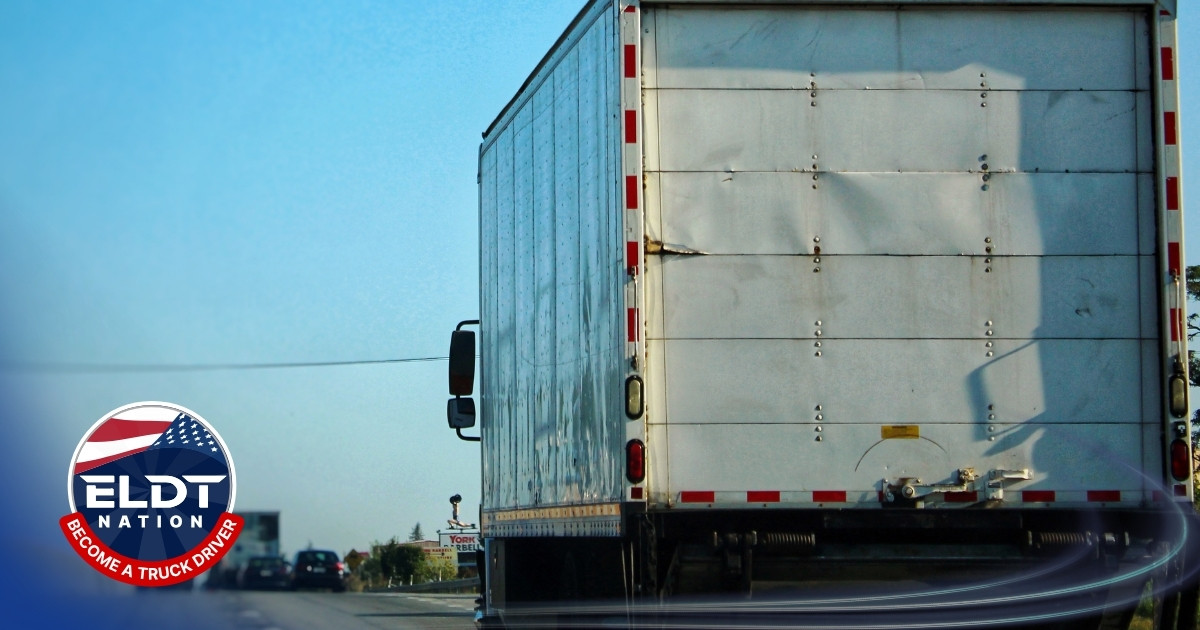The Best Trucking Business Software & Apps for Managing Operations
Managing a trucking business has evolved far beyond dispatchers scribbling loads on whiteboards and drivers shoving stacks of paperwork into glove boxes. Today’s successful fleets—whether you’re an owner‑operator with one truck or a large carrier with hundreds—leverage specialized software to dispatch loads, monitor vehicle health, comply with regulations, manage driver payroll, and optimize routes in real time. The right system not only cuts administrative overhead but also boosts safety and profitability. With so many products on the market, however, choosing the best tools for your operation can be daunting. This comprehensive guide reviews leading trucking software and apps for 2025, explains what they do, and offers guidance on selecting and implementing the right solutions for your fleet.
Why Software Matters in Modern Trucking
The transportation industry faces razor‑thin margins, fluctuating fuel prices, strict regulatory requirements and a chronic driver shortage. Software can help address these challenges by:
- Automating dispatch and load tracking – Transportation Management Systems (TMS) and dispatch software assign loads, track drivers in real time, and alert you to delays or exceptions. They streamline communication between dispatch, drivers and customers.
- Ensuring compliance – Electronic logging devices (ELDs), driver qualification file management and integrated safety tools help carriers comply with FMCSA regulations. Automated alerts prevent violations before they occur.
- Optimizing routes and fuel consumption – Route planning software uses algorithms to reduce empty miles, avoid traffic congestion and identify the most fuel‑efficient paths. Telematics systems monitor driver behavior and vehicle performance to coach fuel‑efficient driving.
- Managing maintenance – Fleet maintenance applications schedule preventative maintenance, track repairs and costs, and send reminders when inspections are due. This reduces breakdowns and extends equipment life.
- Recruiting and retaining drivers – Applicant tracking systems and driver engagement apps streamline hiring, onboarding and ongoing compliance training. Engaged drivers are less likely to leave.
- Improving customer service – Real‑time tracking portals and digital proof‑of‑delivery allow shippers to see their loads’ status and get immediate notification of any delays. This transparency builds trust and can justify higher rates.
Categories of Trucking Software
Before diving into specific products, it’s helpful to understand the main categories:
- Transportation Management Systems (TMS) – End‑to‑end platforms for planning, executing and optimizing freight movements. They handle dispatch, load planning, carrier selection, routing, billing and reporting. Examples: TruckLogics, Axon, PortPro.
- Fleet Maintenance Management – Tools for scheduling inspections, tracking repair history, managing parts inventories and generating maintenance reports. Examples: AUTOsist, Fleetio.
- Compliance and Safety – Software that manages driver qualification files, Hours‑of‑Service logs, Drug & Alcohol Clearinghouse queries and safety training. Examples: SafetyCulture, Motive (formerly KeepTruckin), Tenstreet.
- Telematics and GPS Tracking – Systems that collect data from vehicles to monitor speed, idling, engine health, fuel usage and driver behavior. Examples: Samsara, Verizon Connect.
- Route Planning and Optimization – Apps that use algorithms and mapping data to plan efficient routes and reduce empty miles. Examples: Route4Me, Geotab’s integrated solution.
- Driver Recruitment and Onboarding – Applicant tracking and document management systems designed specifically for the trucking industry. Examples: Tenstreet.
- Drayage and Specialized Operations – Software tailored for intermodal drayage carriers, port trucking, heavy haul and other niche markets. Examples: PortPro.
Top Trucking Software and Apps of 2025
The following list reviews some of the most prominent trucking software solutions available this year. We’ve categorized them by their primary functions and highlighted key features, advantages and considerations. Prices vary depending on fleet size and feature sets; many providers offer tiered plans with monthly subscriptions.
SafetyCulture (iAuditor)
Category: Compliance & Safety / Inspection Management
SafetyCulture’s iAuditor is a mobile inspection app widely used across industries, including transportation. It allows companies to create digital checklists for vehicle inspections, driver evaluations and safety audits. Users can attach photos, record corrective actions and generate reports in seconds. For trucking fleets, iAuditor can replace paper pre‑trip and post‑trip inspection forms and integrate with maintenance systems to trigger work orders.
Pros:
- Easy to build custom checklists without coding
- Real‑time data and analytics on inspection performance
- Works offline and syncs when connectivity returns
- Integrates with popular maintenance and fleet management platforms
Cons:
- May require some training to fully utilize its features
- Pricing may be high for small fleets compared to simpler checklist apps
Best For: Fleets of all sizes looking to digitize inspections and safety audits, especially those with strict compliance requirements.
TruckLogics
Category: Transportation Management System (TMS)
TruckLogics is an all‑in‑one cloud‑based TMS designed for owner‑operators, leased operators and small to mid‑sized fleets. It offers dispatching, invoicing, load planning, trip sheets, driver settlements, document storage and International Fuel Tax Agreement (IFTA) reporting. The platform integrates with QuickBooks and offers a mobile app for drivers to upload proof‑of‑delivery and expense receipts.
Pros:
- Affordable pricing with plans tailored to fleet size
- User‑friendly interface with a short learning curve
- Comprehensive features from dispatch to accounting
- Robust mobile app for drivers
Cons:
- Some users report limited customization options for reports
- Not as feature‑rich as enterprise TMS solutions
Best For: Owner‑operators and small to mid‑sized fleets seeking an affordable yet comprehensive management tool.
TruckingOffice
Category: Dispatch and Fleet Management
TruckingOffice helps small trucking companies manage dispatch, driver settlements, invoicing, fuel tax reporting and equipment maintenance. It provides real‑time load tracking and generates automatic reminders for maintenance and permit renewals. The software is web‑based and offers a driver portal for uploading documents and viewing assignments.
Pros:
- Integrates dispatch, accounting and maintenance in one system
- Generates IFTA reports and mileage tracking automatically
- Scalable pricing based on number of trucks
Cons:
- Interface may feel dated compared to newer platforms
- Limited integrations beyond its core modules
Best For: Small fleets looking for an entry‑level dispatch and management solution.
AUTOsist
Category: Fleet Maintenance Management
AUTOsist focuses on simplifying maintenance management for fleets of any size. It allows you to log service history, set reminders, track fuel usage and monitor part inventories. The mobile app lets drivers capture receipts and record issues on the go. For fleets with multiple asset types—trucks, trailers, forklifts—AUTOsist offers customizable categories and bulk upload tools.
Pros:
- Intuitive interface and easy setup
- Affordable subscription cost
- Mobile app for drivers to report issues instantly
- Detailed maintenance reports with cost analysis
Cons:
- Does not include dispatch or billing features
- Limited integrations compared to some enterprise systems
Best For: Fleets focused on keeping their equipment in top shape, including companies with mixed assets.
Axon Software
Category: Enterprise Transportation Management System
Axon is a robust TMS that combines dispatch, accounting, fleet maintenance, driver payroll and document management in a single platform. What sets Axon apart is its real‑time integration across all modules—enter data once and it instantly populates throughout the system. It supports multiple business types, including long‑haul trucking, oilfield service, heavy haul and specialized carriers.
Pros:
- Complete end‑to‑end management, reducing the need for separate systems
- Real‑time data sharing across dispatch, accounting and maintenance
- Highly configurable to suit different trucking niches
- Strong customer support
Cons:
- Higher price point than simpler systems
- Initial setup and training can be time‑consuming
Best For: Medium to large fleets that need an integrated enterprise solution and can invest in training and customization.
Verizon Connect (Reveal)
Category: Telematics & GPS Tracking
Verizon Connect’s Reveal platform offers GPS tracking, driver performance monitoring, route planning and customizable alerts. Hardware devices installed in vehicles send real‑time data on location, speed, idling, harsh braking and engine diagnostics. Dispatchers can view vehicles on a live map, assign jobs and communicate with drivers through the mobile app. Reports help identify fuel waste, unauthorized usage and maintenance issues.
Pros:
- Reliable network coverage and robust hardware
- Detailed driver scorecards and safety alerts
- Geofencing and route deviation notifications
- Integration with fuel card data to analyze consumption
Cons:
- Requires hardware installation in each vehicle
- Some users report difficulty with customer support
Best For: Fleets of any size seeking robust telematics for safety, fuel savings and asset tracking.
Samsara
Category: Telematics, Safety & Compliance
Samsara offers an integrated platform combining GPS tracking, dash cams, electronic logging devices, route optimization and temperature monitoring for refrigerated units. Its AI‑enabled dash cameras detect risky behaviors like phone use or tailgating and can alert drivers in real time. The system also automates Hours‑of‑Service compliance and provides cloud‑based analytics dashboards.
Pros:
- All‑in‑one hardware devices reduce equipment clutter
- AI dash cams enhance safety and driver coaching
- Cloud‑based analytics with customizable reports
- Open API for third‑party integrations
Cons:
- Higher cost relative to basic telematics providers
- Requires ongoing subscription for hardware and software
Best For: Fleets that prioritize safety and want integrated telematics, video and compliance in one system.
Route4Me
Category: Route Planning & Optimization
Route4Me helps carriers plan and optimize multi‑stop routes for multiple vehicles. Users can import addresses or integrate with order management systems, then generate optimized routes that reduce miles driven and fuel consumption. Drivers receive routes via mobile app and can provide proof of delivery. The software is used by LTL carriers, courier companies and service businesses.
Pros:
- Fast route optimization using proprietary algorithms
- Mobile app with turn‑by‑turn navigation
- Integration with telematics and CRM systems
- Can adapt to last‑minute route changes on the fly
Cons:
- Primarily focused on routing; lacks dispatch or billing features
- Pricing based on number of vehicles and routes can add up for large fleets
Best For: Fleets with complex routing needs, such as final‑mile delivery or LTL operations.
Tenstreet
Category: Driver Recruitment & Compliance
Tenstreet streamlines driver recruiting, onboarding and compliance management. Its applicant tracking system (ATS) integrates with job boards, pre‑screening services, background checks and drug testing providers. It also manages driver qualification files, monitors expiration dates (CDL, medical, HazMat), and provides training modules through its Driver Pulse app.
Pros:
- Simplifies recruiting and reduces time to hire
- Helps maintain DOT compliance with automated alerts
- Mobile‑friendly driver application and document upload
- Integrates with many third‑party screening services
Cons:
- May be overkill for very small fleets with limited hiring needs
- Subscription fees add to overhead if you are not actively recruiting
Best For: Medium to large carriers that continually recruit drivers and need a comprehensive compliance management tool.
PortPro
Category: Drayage and Intermodal Logistics
PortPro caters specifically to drayage carriers operating at ports and rail yards. It offers dispatch, driver communication, container management, demurrage tracking, billing and customer portals. The platform’s geofencing features automatically update container status when entering or leaving terminals. It also integrates with chassis providers and equipment control numbers for accurate accounting.
Pros:
- Designed for the unique needs of drayage carriers
- Automates demurrage and per diem charge tracking
- Provides customers with real‑time container visibility
- Streamlines interchange paperwork
Cons:
- Limited applicability outside drayage and intermodal operations
- Pricing may be high for small port carriers
Best For: Intermodal and drayage fleets operating at ports and rail yards.
.jpg)
How to Choose the Right Software for Your Fleet
With so many options, selecting the right mix of software can feel overwhelming. Use these criteria to evaluate products and determine which solutions align with your needs:
- Business size and scope – An owner‑operator will not need the same level of functionality as a 200‑truck carrier. Look for scalable pricing and feature sets that match your current size and growth plans.
- Core needs – Identify your top pain points—dispatch inefficiencies, compliance risk, maintenance problems, recruiting hurdles—and prioritize tools that address those issues. For example, if your biggest challenge is keeping up with pre‑trip inspections, a digital inspection app like SafetyCulture may offer more value than a full TMS.
- Ease of use – Choose software with intuitive interfaces. Drivers and dispatchers are more likely to adopt tools that are easy to learn. Request demos and trial periods to evaluate user experience.
- Integration – Consider whether the software integrates with your existing systems (accounting, payroll, fuel cards, load boards). Seamless integration prevents duplicate data entry and reduces errors.
- Customer support – Responsive support is crucial, especially when something goes wrong. Read reviews or ask peers about their experiences with a provider’s support team.
- Cost – Evaluate total cost of ownership, including hardware, installation, training and ongoing subscription fees. A higher upfront investment may pay off if the system reduces fuel consumption or prevents violations.
- Regulatory alignment – Ensure the software helps you meet FMCSA and state regulatory requirements, such as ELD mandates, driver qualification file management and IFTA reporting.
Software can streamline operations, but professional training is equally crucial for long‑term success. ELDT Nation offers comprehensive courses. Visit ELDT Nation to access courses that complement your technology investments and elevate your performance.







